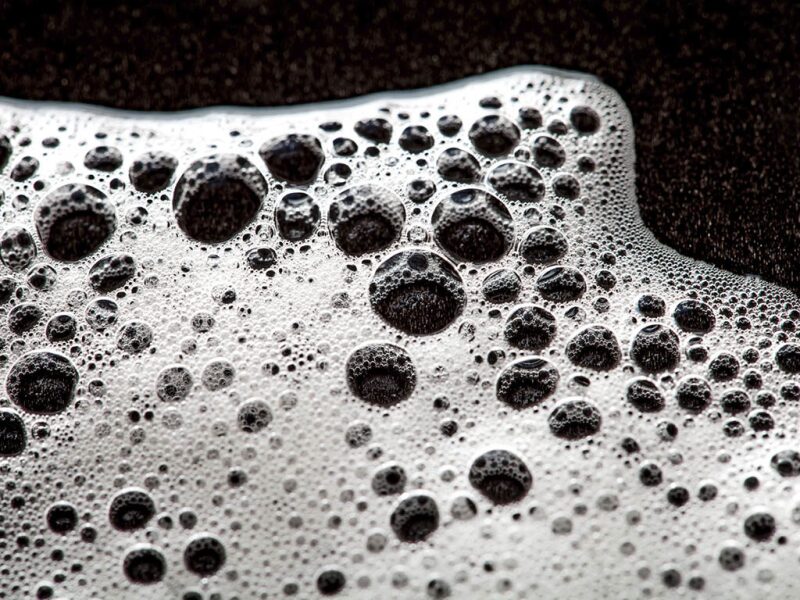In an SPE webinar sponsored by the Separations Technology Technical Section in June, “Foaming in Separators: Handling and Operation,” Wally Georgie, principal consultant at Maxoil Solutions, presented an overview of foam generation and how the design of processes and chemical management can exacerbate its detrimental effects in separators. More than 100 people participated in the webinar.
The causes of foam are impurities, other than water, in crude oil that are impractical to remove before an inlet stream reaches the separator. Foams in crude oil are colloidal systems with liquid continuous phases and gaseous dispersed phases. Their formation requires the presence of liquid, gas, and a foam stabilizing agent (surfactant). Foams are generated anywhere from the wellhead to the refinery at points where gas release and related pressure drops occur in processing equipment, pipework, chokes, control valves, and in separator inlet devices where poor design causes inefficient separation.
Condensation, which occurs when released gas agglomerates at the liquid surface to form large bubbles, contributes to foam formation. Dispersion, which occurs when gas is introduced into the liquid phase, also leads to foaming. For example, during the purging of gas into a water injection system or gas flotation for water treatment, the dispersed bubbles of gas rise to the surface of the liquid and form foam.
The amount of foam produced depends on the nature and amount of the surfactant, design of the existing process system, and the level of gas release (pressure drop). Surfactants responsible for foaming stability in crude oils are similar to those that stabilize emulsions, such as resins and asphaltenes.
Foam in a separator affects the liquid phase. If a large foam layer is present, liquid levels must be reduced to stop liquid carry-over. Because foam has a high volume/weight ratio, it can occupy a large amount of the vessel space, decreasing the space available for liquid collection or gravity settling. If foam is uncontrolled, it becomes impossible to remove separated gas or degassed oil from the vessel without entraining some of the foam in the liquid or gas outlets.
The presence of a foam layer in the separator results in false level readings, generally false highs, from traditional level control instrumentation. The false high-level readings result in the actual levels being too low, causing gas carry-under or poor oil and water quality.
Georgie described a white rag test as a simple and widely used method to detect foam in separators. A white rag is placed on the gas sample point of separators to collect oil mist. This provides a qualitative check on the amount of oil being carried with the gas. Instrumentation irregularity, liquid carry-over in downstream vessels, and the presence of greater than expected liquid flow through scrubbers are indicators of the presence of foam.
Determining the foaming stability of crude requires a representative sample. Georgie said, “There is no magic way of determining the stability of the foam.” The risk of foaming can be predicted by using laboratory apparatus as described in test method ASTM D892-IP 146, “Foaming Characteristics of Lubricating Oils.” The test sample is contained in a cylinder and sparged with nitrogen gas at a specified temperature and duration. The foam level is assessed, and the length of time required for its collapse is determined. Other specialized tests are available through laboratory service companies, but are generally more expensive than the more commonly used IP 146 method.
Georgie said, “If you have a sign of the presence of foam, you must act on it. Separation efficiency may decrease by 50%, and oil and water carry-over can foul gas compressors, causing shutdowns.” Table 1 shows the effects of foam on production and the affected process components.

Design of separators can help to mitigate the effects of foamy crudes. Inlet pipework design flaws can contribute to the formation of foam. Undersized feed pipework or placement of control valves, sharp bends of pipe, or reducers too close to the separator exacerbate foam formation. Georgie said that if designed correctly, cyclonic inlet devices can collapse the foam through centrifugal action. However, poor design of the devices can cause gas carry-under and lead to foam formation.
Foam breaker packs are mounted after the inlet device and extend across the gas phase to promote the breakdown of foam. Made from structured packing, they present a tortuous path for the foam to pass through.
Demisters, such as vane packs (Fig. 1), are low-pressure-drop devices designed to separate entrained liquids from a gas stream. Liquid-laden gas is passed into the vanes, and the gas is then subjected to several changes in direction, which causes the liquid to impact on the vane walls where the droplets coalesce and are removed from the stream.

Chemical treatments involve adding antifoaming agents or defoamers to the crude oil. Antifoaming agents prevent or reduce the amount of foam produced, while defoamers are dosed into existing foam to promote breakdown. Defoamers may also contain a low level of surfactant for dispersal.
The recording of this webinar can be viewed at https://webevents.spe.org/products/foaming-in-separators-handling-and-operation

